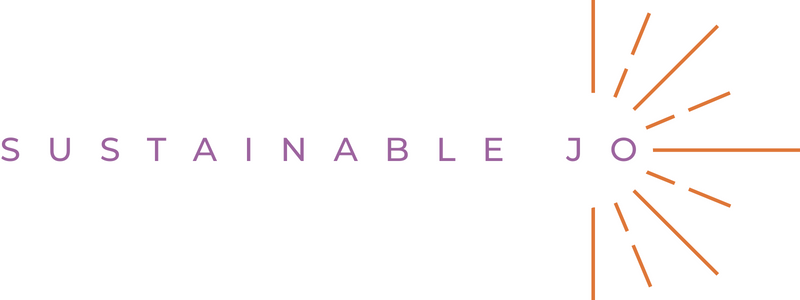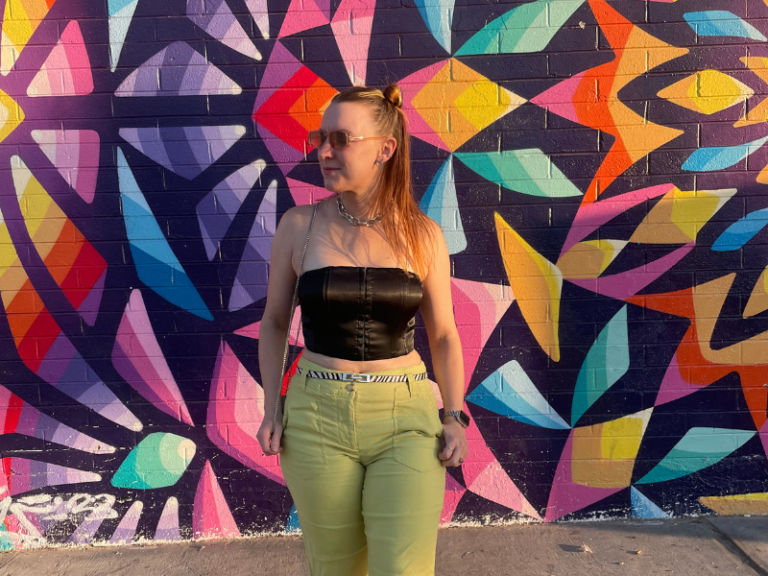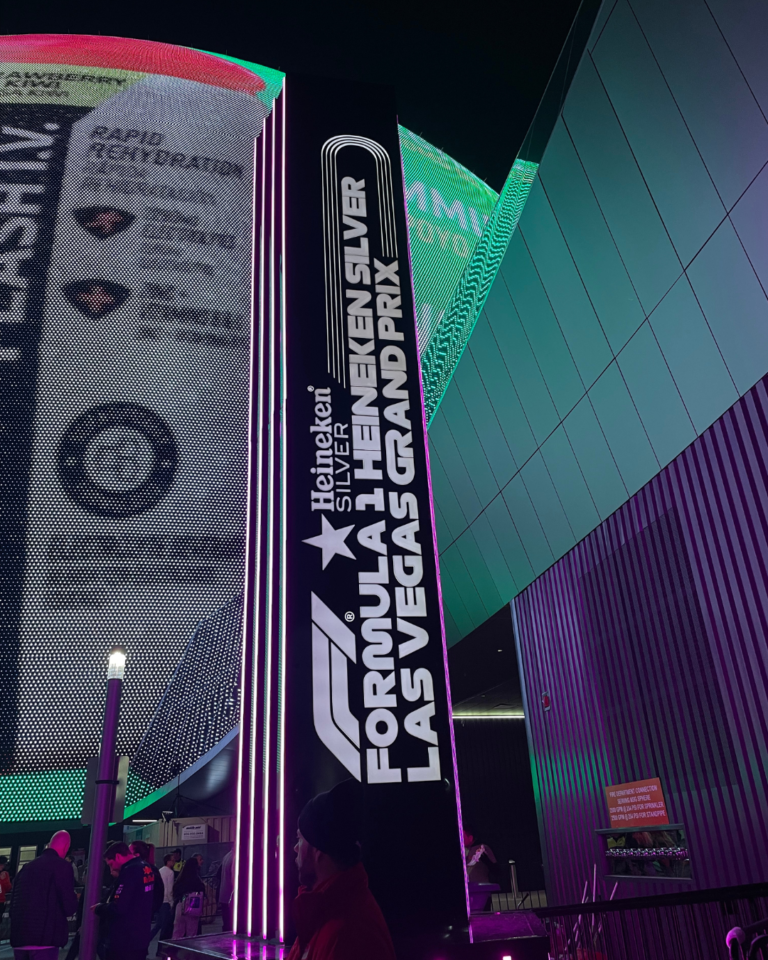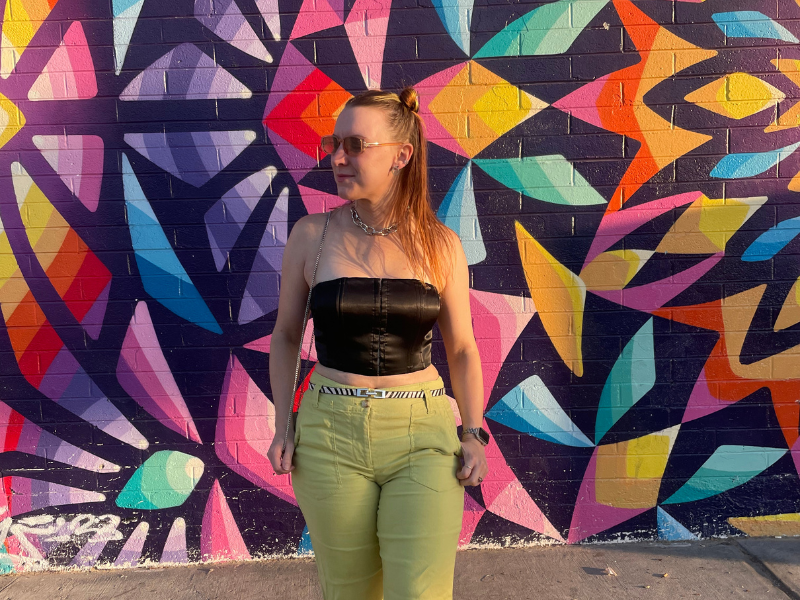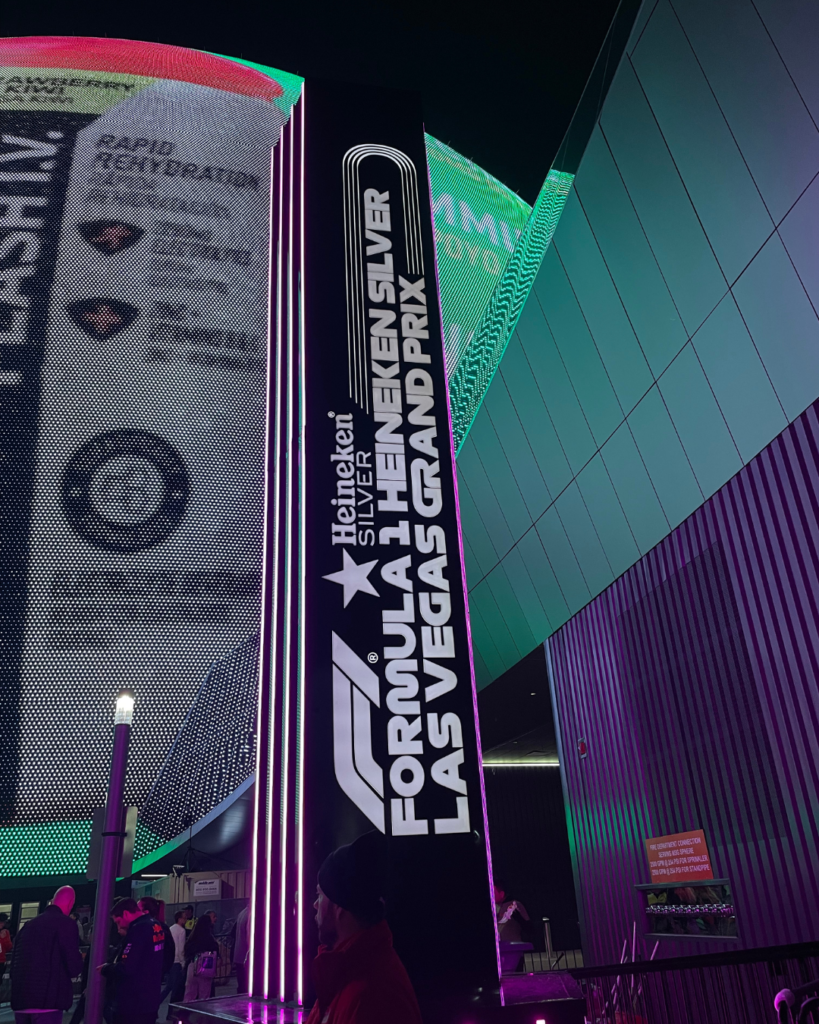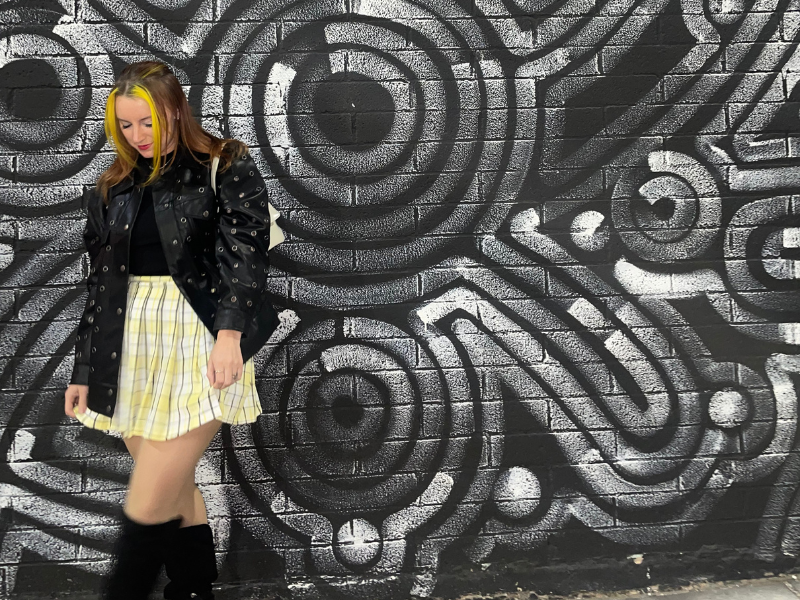
In the ever-evolving world of fashion, one term that has gained significant prominence is “fast fashion.” This industry, marked by its rapid production cycles, affordability, and constant trend turnover, has become a dominant force in the global fashion landscape. Let’s dive into the big name brands that commonly have quick turnover of styles, key aspects that define fast fashion and explore the impact it has on consumers and the environment.
Fast Fashion Brands in the United States
In the ever-changing fashion landscape, certain brands have become synonymous with hasty trends, low-cost options, and constant style turnover. These brands, collectively known as “fast fashion,” have not only transformed our shopping habits but have also raised concerns about sustainability and ethical practices. Let’s delve into some well-known fast fashion brands in the United States and shed light on why they are at the forefront of this controversial industry.
1. H&M
H&M, a Swedish multinational, has positioned itself as a pioneer in fast fashion. While it touts sustainability initiatives like garment recycling, critics argue that the brand’s rapid production and affordability come at the expense of ethical practices. Despite its global appeal, H&M has faced scrutiny for contributing to the disposable fashion culture.
2. Zara
Zara, is one of the most popular Spanish clothing brands in the USA as it is part of the Spanish Inditex group. Zara has revolutionized the fashion industry with its “fast to market” strategy. However, this approach has been criticized for fostering a culture of overconsumption. Zara’s quick response to trends raises questions about the environmental impact of mass production and the working conditions in its global supply chain.
3. Forever 21
Forever 21, a go-to for budget-conscious consumers, has faced backlash for its fast-paced turnover of trendy items. Critics argue that the brand’s emphasis on low prices contributes to the industry’s ethical and environmental challenges, perpetuating a cycle of rapid consumption and disposal.
4. Fashion Nova
Fashion Nova, a rising star in the fast fashion scene, has garnered attention through strategic influencer collaborations. While praised for its online success, the brand has been criticized for its environmental footprint and the impact of its rapid production model on workers in the fashion supply chain.
5. Shein
Shein, a Chinese e-commerce giant, has disrupted the fashion world with its vast and ever-changing inventory. However, concerns have been raised about the working conditions in Shein’s supply chain, and the brand’s low prices often prompt questions about the true cost of production and the impact on garment workers.
6. Topshop
Topshop, a British multinational, has gained popularity for bringing runway-inspired styles to the masses. Yet, its fast fashion model has faced criticism for contributing to a throwaway culture, where cheap and trendy items are quickly discarded, adding to the mounting issue of textile waste.
7. Express
Express, an American brand, has become a prominent player in the fast fashion arena. While catering to a wide audience with its trendy and affordable clothing, Express, like its counterparts, faces scrutiny for the impact of its rapid production cycles on both the environment and labor conditions.
8. ASOS
ASOS, a UK-based online retail giant, caters to a global audience seeking affordable fashion. However, the brand’s rapid turnover and the sheer volume of products available raise questions about the sustainability of such a model and the consequences for the environment.
9. Boohoo
Boohoo, a UK-based online retailer, has made a mark with its rapid production of trend-focused clothing. Yet, the brand has faced controversies related to labor conditions in its supply chain, bringing attention to the ethical concerns associated with the fast fashion industry.
10. Old Navy
Old Navy, a popular American brand, is known for providing affordable and casual clothing. As part of the Gap Inc. family, Old Navy has become a staple in the fast fashion landscape. However, like its counterparts, the brand faces scrutiny for contributing to the issues associated with the rapid turnover of fashion trends.
Understanding the complexities of these fast fashion brands reveals a darker side beyond the allure of trendy clothing. From labor practices to environmental consequences, each brand’s unique approach to the fast fashion model warrants careful consideration by consumers. As we navigate the ever-evolving world of fashion, it becomes crucial to make informed choices that align with ethical and sustainable values.
How Do we Decide if a Brand is One of the Biggest Fast Fashion Brands?

Fast fashion brands are characterized by their ability to quickly produce and distribute trendy, inexpensive clothing and accessories in response to the latest fashion trends. Several factors contribute to these brands being classified as fast fashion:
- Rapid Production Cycles: Fast fashion brands are known for their short production cycles. They quickly design, produce, and bring new collections to the market, often in a matter of weeks.
- Affordability: Fast fashion items are generally priced lower than those from traditional retailers. This allows consumers to purchase trendy clothing at a fraction of the cost of high-end designer pieces.
- Imitation of High-End Fashion: Fast fashion brands often draw inspiration from current runway trends and high-end designer collections. They replicate these styles quickly and make them accessible to a broader audience.
- Mass Production: Fast fashion relies on large-scale, efficient production processes. Mass production helps keep costs down and allows for the quick creation of a significant number of items.
- Global Supply Chains: These brands typically have extensive and global supply chains. They can source materials and manufacture products in different parts of the world, taking advantage of lower production costs.
- Frequent Inventory Turnover: Fast fashion retailers constantly update their inventory with new styles, encouraging consumers to make frequent purchases to stay on-trend. This contrasts with traditional fashion retailers that may have seasonal releases.
- Marketing and Social Media: Fast fashion brands heavily utilize marketing strategies and social media to create a sense of urgency and desire for their products. Influencer collaborations, online promotions, and limited-time offers are common tactics.
- Disposable Fashion Culture: Fast fashion is often associated with a “wear it once” mentality. The low cost of items encourages consumers to buy more frequently and dispose of clothing more regularly, contributing to environmental concerns.
It’s important to note that the fast fashion industry has faced criticism for its environmental and ethical impact, including concerns related to labor conditions, waste, and the exploitation of natural resources. As a result, there has been a growing movement towards sustainable and ethical fashion practices in recent years.
Affordable Non-Fast Fashion Brands and Trendy Sustainable Clothing Alternatives
Amidst the dominance of fast fashion, there’s a rising awareness and demand for alternatives that prioritize sustainability and ethical practices. For those looking to steer clear of the pitfalls associated with fast fashion, exploring affordable trendy non-fast fashion brands and trendy sustainable clothing options becomes crucial.
While fast fashion brands to avoid often grab headlines, there’s a growing list of slow fashion brands that prioritize quality, ethical manufacturing, and environmental consciousness. These slow fashion brands encourage consumers to adopt a more mindful approach to clothing consumption, embracing longevity over disposability.
Some key phrases, like “affordable non-fast fashion brands” and “trendy sustainable clothing brands,” highlight the shift towards more conscious consumer choices. As we navigate the complexities of the fashion industry, exploring slow fashion becomes not just a trend but a statement—a commitment to ethical practices, durability, and a more sustainable future.

Download my guide to the top 25 sustainable brands today
The discussion around fast fashion problems and ethical clothing brands has become integral to shaping the future of the fashion industry. As consumers, being aware of the biggest fast fashion brands and understanding the fast fashion environmental impact empowers us to make informed choices.
Comparing fast fashion examples to slow fashion brands shows the range of choices. Choosing trendy non-fast fashion brands lets individuals align their style preferences with values like sustainability and ethics.
In the dynamic world of fashion, where trends come and go, our choices as consumers play a pivotal role. By supporting brands that embody the principles of slow fashion, we contribute to a shift towards a more sustainable and ethical fashion landscape. As we explore ethical clothing brands and seek out affordable non-fast fashion alternatives, we become active participants in reshaping the narrative of an industry that extends far beyond the runway—a narrative that values people, the planet, and enduring style over fleeting trends.
Sustainable Solutions for a Fashion Revolution
Implementing sustainable solutions for a fashion revolution involves adopting practices that prioritize environmental and social responsibility. Here are several sustainable solutions that can contribute to a positive change in the fashion industry:
- Ethical and Transparent Supply Chains:
- Brands can commit to transparency in their supply chains, ensuring that every stage of production adheres to ethical and fair labor practices. This includes providing fair wages, safe working conditions, and respecting workers’ rights.
- Use of Sustainable Materials:
- Opting for eco-friendly and sustainable materials, such as organic cotton, recycled polyester, and Tencel, can significantly reduce the environmental impact of clothing production. These materials are often produced with fewer pesticides, chemicals, and water.
- Circular Fashion and Recycling Initiatives:
- Encouraging a circular fashion economy involves designing products with longevity in mind and promoting recycling programs. Brands can facilitate the return and recycling of old garments, minimizing textile waste and promoting a closed-loop system.
- Slow Fashion Practices:
- Embracing slow fashion encourages consumers to buy fewer, high-quality items that are designed to last. This approach reduces overconsumption, encourages mindful purchasing, and minimizes the environmental footprint of the fashion industry.
- Capsule Collections and Versatile Designs:
- Creating capsule collections with timeless and versatile designs promotes a more sustainable approach to fashion. This minimizes the need for constant production of new styles and reduces the pressure on consumers to follow rapidly changing trends.
- Local and Small-Scale Production:
- Supporting local and small-scale production can reduce the carbon footprint associated with global transportation. It also fosters community engagement, supports local economies, and ensures closer oversight of production processes.
- Waste Reduction and Upcycling:
- Brands can focus on waste reduction by optimizing production processes to minimize excess fabric and unsold inventory. Upcycling, or repurposing existing materials into new garments, is another creative way to minimize waste.
- Eco-Friendly Packaging:
- Choosing sustainable packaging options, such as recycled materials or biodegradable alternatives, helps reduce the environmental impact of product packaging. This includes using minimal packaging and avoiding excessive use of plastic.
- Educational Initiatives:
- Brands can play a role in educating consumers about sustainable fashion practices. This includes providing information on the environmental and social impact of fast fashion and offering tips on making conscious and ethical fashion choices.
- Collaboration and Industry Initiatives:
- Collaboration among brands, industry stakeholders, and organizations can drive collective efforts toward sustainability. Participating in industry-wide initiatives, such as Fashion Revolution, can amplify the impact of sustainable practices.
- Technology Integration:
- Utilizing technology, such as blockchain, to trace and authenticate the origin of materials and products can enhance transparency in the supply chain. This ensures that consumers have access to information about the ethical and environmental practices of the brands they choose.
- Consumer Engagement and Empowerment:
- Encouraging consumers to be mindful of their choices and supporting brands that align with their values empowers individuals to drive change. Brands can facilitate this by providing information on their sustainability practices and engaging with consumers on social and environmental issues.
By embracing these sustainable solutions, the fashion industry can pave the way for a revolution that prioritizes ethical practices, minimizes environmental impact, and promotes a more conscious approach to style.
In conclusion, the exploration of fast fashion brands reveals the environmental and ethical challenges associated with their rapid turnover. Understanding these implications is crucial for making informed, sustainable choices in the fashion landscape. The blog goes beyond highlighting the problems, introducing sustainable alternatives such as slow fashion brands and affordable non-fast fashion options. It provides actionable steps for a fashion revolution, encouraging ethical supply chains, circular fashion practices, and consumer empowerment. As the industry transforms towards sustainability, consumers play a key role in shaping this revolution by supporting slow fashion and sustainable solutions. This active contribution reshapes a fashion landscape that values ethics, minimizes environmental impact, and fosters a conscious approach to style.

